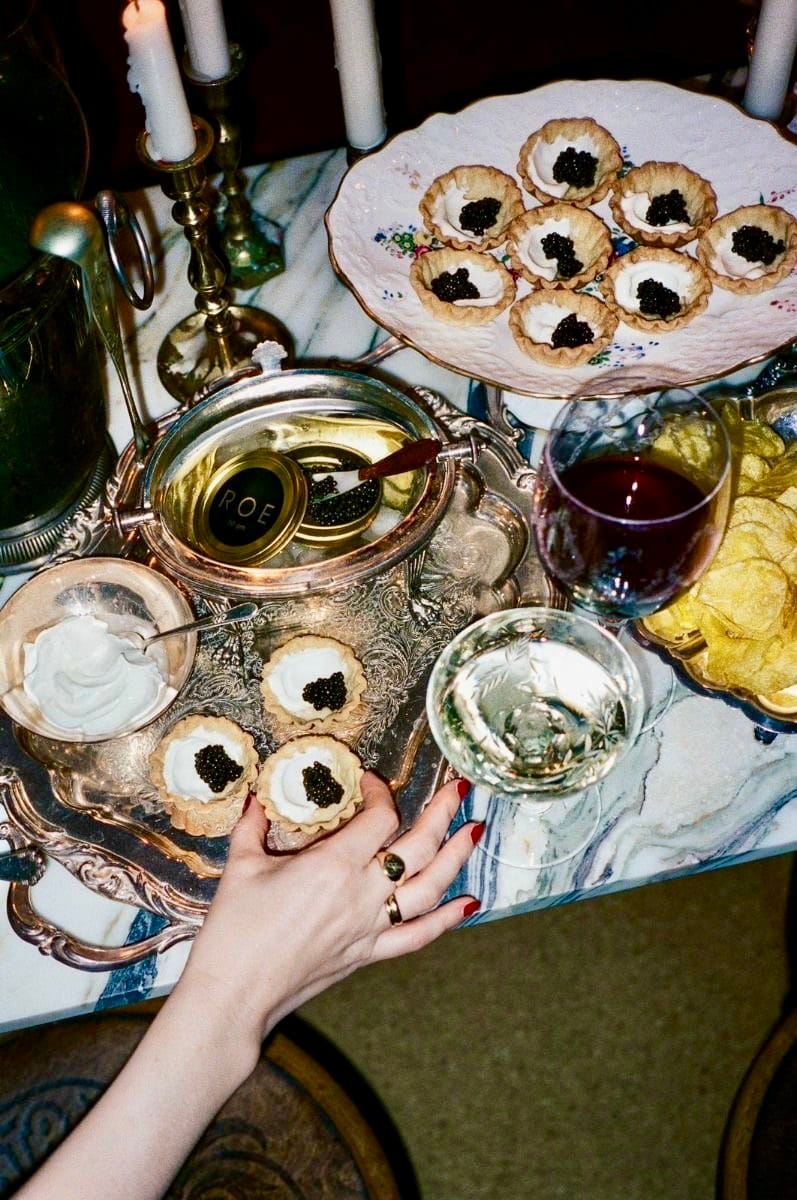
We love a good dinner party and there’s something quietly luxurious about one done well. Not something overly curated, Pinterest-perfect, but the sort that feels full of conversation, laughter, connection, a table that tells a story. A good dinner party goes into the night, unraveling slowly and naturally, losing track of time. And hosting one isn’t about perfection, it’s about flow, food, wine, conversation, knowing when to lead, when to let others lead, and how to make people feel entirely at ease in your home.
Here’s how we host a dinner party that lingers in conversation, memory, and feeling.
1. Start with a Mood, Not a Menu
Before you plan the food, decide what kind of evening you want to create. Do you want it to feel slow and leisurely? Bright and spontaneous? Long, wine-fuelled conversations or something light and easy? Once you define the mood, everything else falls into place, the playlist, lighting, menu, pacing, and even how the table looks. Think of it as the dinner party’s version of a dress code, it sets the tone for how people show up.
2. Keep the Menu Stress Free
There's nothing worse than sweating, stressed in the kitchen whilst your guests are in another room. Even if the guest list is excellent, people have still come to spend time with you, the host. So let your menu work for you, not fight against you. Choose dishes that can be mostly prepared in advance, a whole roast chicken, beef wellington, beef lasagne. Any slow-roasted meats, baked pastas, sharing-style platters, or dishes that can sit happily at room temperature will keep you out of the kitchen for the majority of the night. A good rule is one solid main, one comfort dish, one simple green, one thoughtful dessert. For example, lemon-roasted chicken with fennel, truffle mash, sauteed green beans with crispy garlic and peanut butter cheesecake. All of these let you prep well ahead with only small amounts of heating or cooking. The chicken can be prepped and roasting in the oven as your guests arrive. The truffle mash prepared and only needing heating, the green beans blanched and only sauteed with garlic and the cheesecake made that morning or the day before.
Bonus tip: always pre-slice bread before serving. It looks better and saves your guests the awkwardness of tearing at a loaf.
3. Think About Timing
A great dinner party unfolds like a well edited storyline. You don’t want to serve too early or rush the night. The best evenings follow a natural flow, welcome drink on arrival (a signature cocktail if you're feeling bold), a charcuterie board and flowing wine or champagne, then dinner, dessert, and coffee (or more wine and conversation).
Although a charcuterie board seems like additional work, it actually makes it easier for you. If a disaster happens and something is running late, then your guests have something to snack on or if half the party arrives ravenous, then the conversation still flows and you can serve dinner at the time you planned. It doesn't have to be anything fancy, some good cheeses, crackers, grapes, olives, breads and olive oil and arranged on a wooden board.
If the energy is dipping or worse, there's a fall out, you can add small transitions into the evening, serve dessert somewhere else such as the balcony, a sofa, or by candlelight at the kitchen counter. It shifts the energy and keeps people engaged.
4. Layer the Table, But Don’t Overdress It
Beautiful tables don’t need to look overly styled, they need to look welcoming. Start with a neutral base, linen, wood, or marble, and layer textures: soft napkins, nice glasses, taper candles, and a few low arrangements that don’t block conversation. Don’t be afraid of imperfection, the best tables feel touched by human hands and a little bit mismatched. It's a home dinner party not a restaurant or wedding. A slightly crooked candle or unevenly placed glass makes it feel real, not rehearsed. Mix materials, glass next to ceramic, silver with stoneware, a few vintage pieces beside something modern.
5. Curate the Lighting Like a Set Designer
We feel like this is obvious but lighting is everything. Turn off overhead lights. Use lamps, sconces, or candles to create a glow that flatters faces and makes the room look warm and inviting. A small trick is to place tealight candles in low glass votives and hide them behind bottles, serving dishes, or glassware, they create pockets of flickering light that make the table come alive. And if you want to elevate things subtly, use unscented candles. Fragrance and food rarely mix well.
6. Think in Moments, Not Details
What will people remember the next day? The first sip of wine, the music when they arrived, the feeling of being welcomed. Build a few “moments” into your evening, they don’t need to be grand, just a little something different. Maybe you greet everyone with a tray of margaritas or the night ends with a tiered cake stand of tequila shots complete with salt and lime wedges. Something that makes your guests want to take a picture, but is still a simple gesture that feels very personal to both you and them.
7. Choose Music Like a Moodboard
Music should evolve as the evening does. Start light, acoustic, mellow jazz, or soft funk, then build to something a little richer as the night continues. By the time dessert arrives, the playlist should feel almost invisible, something that fills the space without demanding attention and lets the conversation flow over it easily.
If you’re unsure where to start, a good test is - could I talk over this song without raising my voice?
8. Serve Drinks with a Signature
It doesn’t need to be a cocktail, and honestly many of them require too much work to continue through the night. If you want to start with one, then go for it, one that is pretty easy to make in the numbers of your guests (hint, it is not a frozen strawberry margarita) but then move onto wine, prosecco, etc. But a signature detail could be something simple that's elevated, like icy white wine in vintage coupes, or sparkling water served in glass bottles with a twist of lemon. Signature drinks make your guests feel even more special. A frosé (easy to make in bigger batches), your own blend of sangira, or a particular brand of wine will make it so your guests associate it with you.
9. Don’t Over-Curate the Conversation
Good hosting is knowing when to guide conversation and when to let it flow. You don’t need to overthink it, just mix people intentionally. Balance loud with quiet, familiar with new. If you’re hosting a mixed group, anchor the evening with one or two shared topics: a recent exhibition, a restaurant opening, a travel story. Conversation, like a dinner, benefits from a little structure, but never too much.
10. End with Grace
The mark of a good host? Knowing when to end the night without it dragging on, or your guests getting bored or silly drunk. Serve one last round, turn the music down a notch, and shift the lighting slightly, it’s a subtle signal that the evening’s winding down. Help guests gather their things, offer them water for the road, and never let anyone leave empty-handed (a slice of dessert to-go). A good dinner party isn’t about grandeur, it’s about generosity. It’s about opening your home, and yourself, in a way that feels easy, warm, and real. Because in the end, people don’t remember what you served, they remember how they felt. And that’s the real luxury of it.
